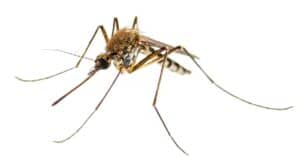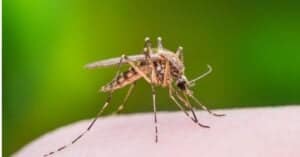Mosquitoes are annoying and potentially dangerous pests that can ruin your outdoor activities. But when do they come out, and how can you avoid them? Today, we will explore the mosquito season in the U.S., breaking it down by month so you can know when to put on the spray and when to put it away!
January
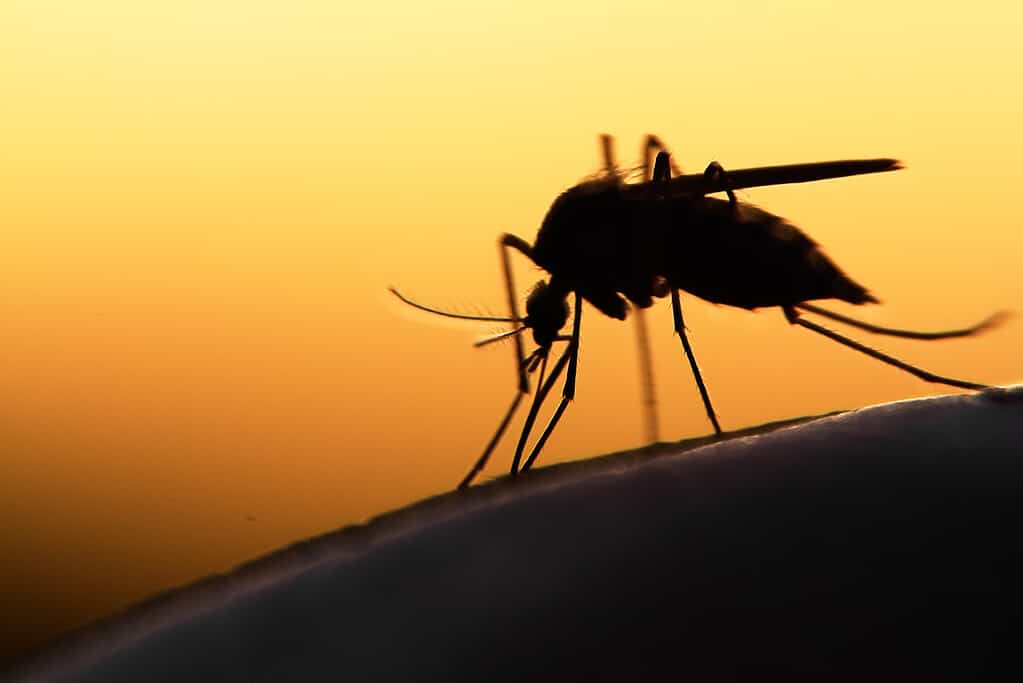
January is one of the least active months for mosquitoes across the United States.
©mycteria/Shutterstock.com
Mosquitoes are not especially active in January. This is because most mosquito species hibernate during the winter and re-emerge when the weather gets warmer. The temperature plays an important factor in when and where mosquito season begins. Generally, mosquito activity will begin when the temperature reaches 50° F. Mosquitoes thrive in hot weather, so they are less likely to be seen in colder months.
However, this does not mean that there are no mosquitoes at all in January. Some areas of the country, such as Florida, may still have mild temperatures that allow some mosquitoes to remain active. Also, some mosquito species may hatch from previously laid eggs in the spring, so they could be present in water sources even before they emerge as adults.
February
Mosquitoes are slightly more active in February than in January. This is because some regions of the country, such as the Gulf Coast, Florida, and Hawaii, may have warm and humid weather that allows mosquitoes to thrive. However, most of the country still experiences cold temperatures that prevent mosquito activity. Mosquito season generally starts when the temperature reaches 50° F.
The areas where mosquitoes are most active in February have mild or warm climates, particularly the southern and coastal states. The areas where mosquitoes are least active have cold or dry climates, such as the northern and inland states.
March
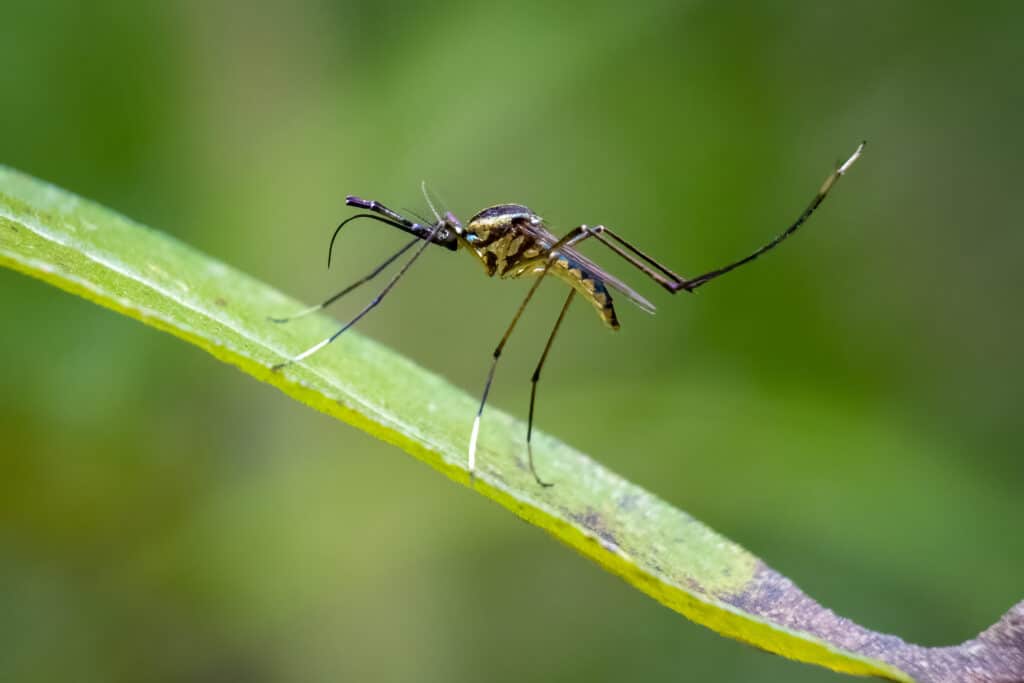
March signals the beginning of mosquito seasons for warmer climates.
©samray/Shutterstock.com
Mosquitoes are more active in March than in February in the southern and southeastern states. This is because the temperature begins to rise above the 50° F level in many parts of the country, triggering the emergence of mosquitoes from hibernation or eggs. Mosquitoes thrive in warm and humid weather, and they start looking for food sources (blood) as soon as they emerge into adulthood.
The areas where mosquitoes are most active in March are the south and southeastern states, with these regions potentially experiencing mosquito season throughout the year or as early as February or March. The Midwest, Pacific Northwest, and Northeast likely won’t experience mosquito season in March to a large extent.
April
Mosquitoes are much more active in April than in March, and they are beginning to come out of hibernation across much of the eastern and central United States. This is because the temperature rises above 50° F in most parts of the country, clearly marking the start of the mosquito season. Mosquitoes breed and feed in warm and humid weather, becoming more abundant and aggressive as the season progresses.
In some states, April is a bit of a tipping month where the mosquito season really ramps up or is delayed a bit. For example, some areas like Minnesota may see a delay in mosquito activity due to cold temperatures or snow.
May
Mosquitoes are very active in May across most of the country. This is because the temperature is consistently above the 50° F threshold in many parts of the country, making mosquitoes more energetic and hungry for that oh-so-delicious blood. Mosquitoes also breed faster in warm and humid weather, so more eggs are laid and hatched in May. May also marks the peak of mosquito season in some regions like Alaska, where mosquitoes swarm in large numbers so thick you have to wear protective gear in certain places.
June
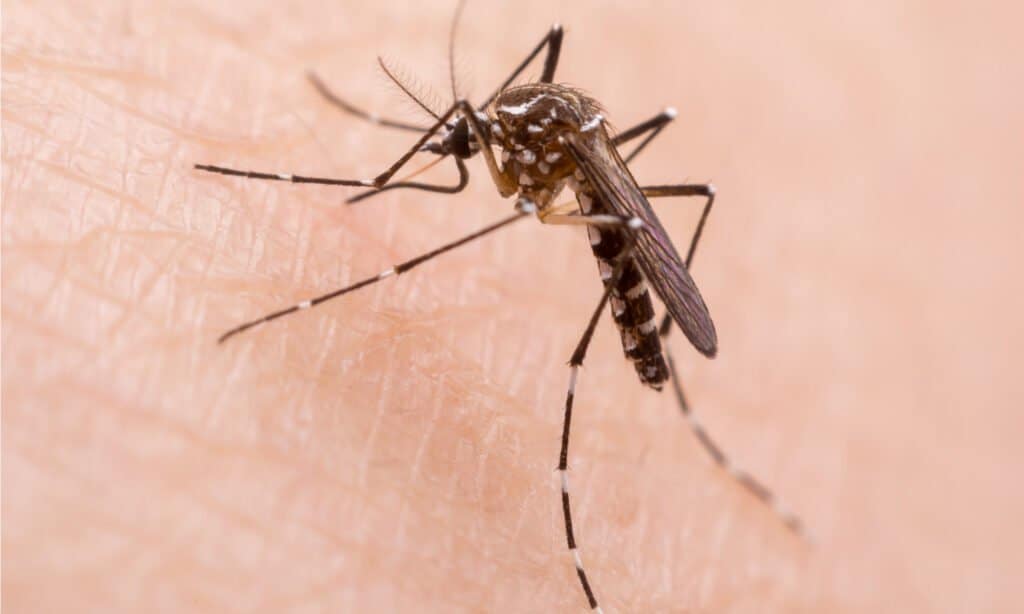
June is the start of the peak season for mosquitoes due to the temperatures and rain.
©Surachai Pung/Shutterstock.com
Mosquitoes are extremely active in June. This is because the temperature is almost always above the 50° F threshold in most parts of the country, making mosquitoes abundant and aggressive, while humans are often heading outside at the same time. Mosquitoes also benefit from the rainfall and humidity, creating more breeding sites and food sources, so each time it rains, there are likely more places created for them to breed.
June is also the peak month for Lyme disease transmission in Minnesota, which is carried by ticks that may be found in areas with high mosquito activity. If you haven’t already bought bug spray by this point, it’s totally worth it!
July
Mosquitoes are extremely active in July. This is because the temperature is well above the 50° F level in most parts of the country, which makes mosquitoes more abundant and aggressive. Mosquitoes also benefit from the rainfall and humidity, creating more breeding sites and food sources. July is one of the peak months of mosquito season in many regions due to its thunderstorms and heat.
Even in dry locations, these swarms can be present, depending on the specific mosquito species and their behavior. For example, some areas like Western Colorado may see a peak in mosquito activity in July due to its annual heavy rainfall in the area.
August
Mosquitoes are extremely active in August. This is because the temperature is well above 50° F in most parts of the country. For most places across the United States, August marks the last of the peak season, and things can begin to taper off slightly after this month in colder regions. For example, some areas like Alaska may see a decline in mosquito activity in August due to cooler temperatures.
August also marks World Mosquito Day, commemorating the discovery that female mosquitoes transmit malaria between humans.
September
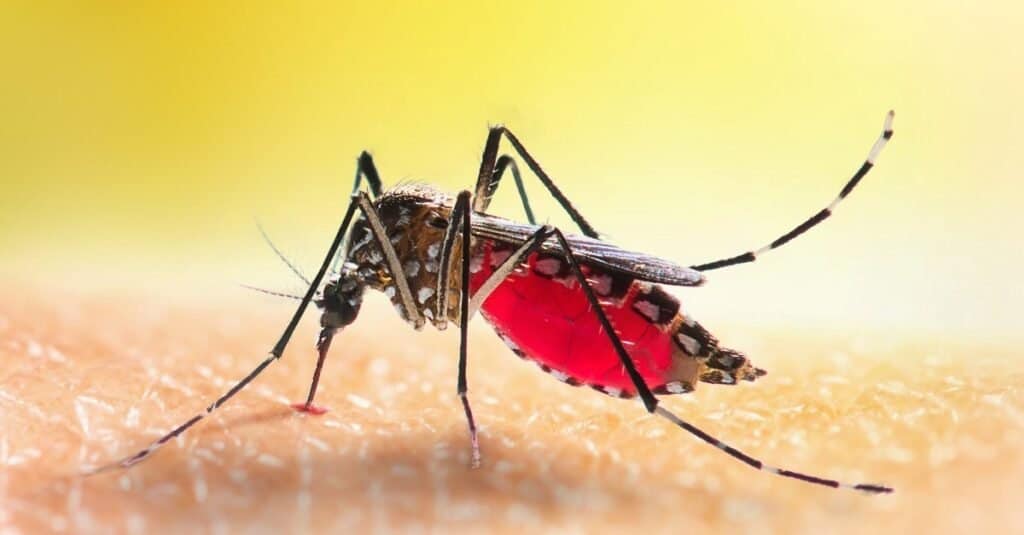
The slow tapering off of mosquito season begins in the northern states and
Canada
around September as things begin to cool off.
©iStock.com/panom
Mosquitoes are still active in September, but their activity begins to decline as the temperature drops below 50° F in many parts of the country. Mosquitoes are less energetic and hungry for blood in cooler weather and breed slower in drier conditions. September marks the end of mosquito season in some regions like Canada, where mosquitoes are common from May to September.
The areas where mosquitoes are beginning to be a bit less active are those that have cool or dry climates, such as New England, the northern Midwest, and Pacific Northwest. However, these patterns may vary depending on the specific mosquito species and their behavior. For example, some areas like Wisconsin may see a final surge in mosquito activity in September due to heavy rainfall.
October
Mosquitoes are less active in October than in September, but their activity does not completely stop. This is because as the temperature drops, the appetites and activity levels of the mosquitoes start to drop, and humans can usually feel a difference when they go outside. Additionally, September is usually drier in certain places, reducing the places where they can breed. Mosquitoes also breed slower in cooler conditions, and some species may start hibernating. October marks the end of mosquito season in some regions like Maryland, where salt marsh species cause the worst problems.
November
Mosquitoes are barely active in November, as their activity stops or slows down significantly due to the cold weather. This is because the temperature drops below that all-important 50° F in most parts of the country, which makes mosquitoes too lethargic to fly or feed. Mosquitoes also stop breeding in cooler and drier conditions, and most species either die off or hibernate until spring. November marks the end of mosquito season in most regions, except for some areas with continued warm and wet climates.
December
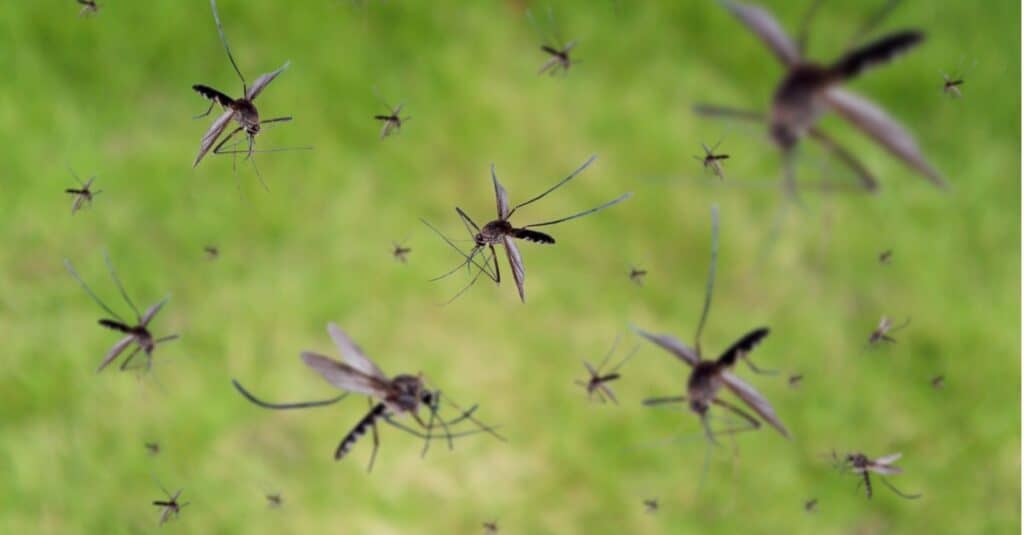
December means the end of mosquito season except for the year-round places where they can breed like southern Florida.
©iStock.com/Kwangmoozaa
Mosquitoes are not active in December, as their activity stops in most places around the country completely due to the cold weather. Most species either die off or hibernate until spring, waiting for temperatures to increase again. December officially marks the end of mosquito season in all regions, except for some areas with very warm and wet climates that don’t follow seasonal rules.
The photo featured at the top of this post is ©
Thank you for reading! Have some feedback for us? Contact the AZ Animals editorial team.



